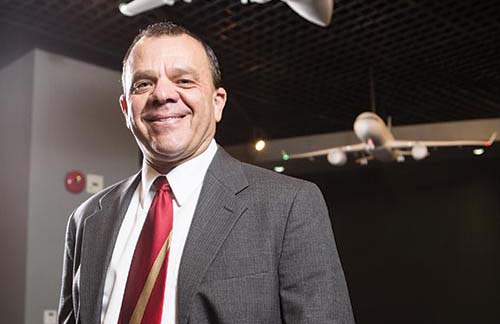Honeywell sizes up Vietnam’s burgeoning aviation market for new opportunities

Brian Davis, vice president of Honeywell’s Air Transport and Regional Aerospace Asia Pacific
Despite the ranking, Vietnam is still a small market for Honeywell compared to China, Malaysia, Indonesia and Singapore, isn’t it?
Yes, that’s right. We consider where we’ll locate our manufacturing and repair facilities mainly based on the maturity of the market. So for example, our largest repair market within the region is based in Singapore, which is aligned with most mature aviation market. We moved our headquarters to Shanghai in 2007 basically to align with overall growth that we expected to see in China. Indonesia and Malaysia were chosen for manufacturing and facilities for new parts based on how we saw these countries developing their economies. Similarly, in Vietnam I fully expect there to be some opportunities in the future.
Honeywell is dedicated to the business growth in Vietnam as the result of the country’s economic development. We are very positive about the aviation outlook in Vietnam. Since 2008, we’ve seen passenger growth of 96 per cent. From what we’re seeing with Vietnam, as the industry continues to mature here, we certainly will be placing not only human resources but may also be exploring other opportunities in terms of market development.
Vietnamese carriers such as Vietnam Airlines and Vietjet Air are expanding their operations not only in Vietnam but also in regional and international markets. So what business opportunities do you expect with these two carriers?
We have really solid and positive relationships with both airlines. They are both really aggressive in different parts of the market in Vietnam. Vietnam Airlines continues to look not only at the regional growth but is also very focused on international growth. Meanwhile, Vietjet Air has focused on the low-cost carrier model and they are responsible for middle income population-based growth. Vietjet Air now has 15 flights daily from Ho Chi Minh City to Hanoi and this will soon rise to 20. When they open up the market, it will allow citizens to shop in Hanoi for the day and then return to Ho Chi Minh City in the evening, which is really exciting.
Honeywell has its products not only in Vietjet Air fleets but also in Vietnam Airlines’ existing fleets. What this means to Vietjet Air and Vietnam Airlines is that the Honeywell technology is designed to make sure that we are maximising efficiency while simultaneously reducing CO2 emissions. So it’s an environmentally-friendly approach, but at the same time it’s helping solve some of the congestive challenges now.
The Vietnamese government is planning the expansion of the country’s airports given that their congestion is affecting the industry’s growth. As a competitive airport management solution provider, how will Honeywell tap this business?
First of all, I think it’s a very logical decision to start planning now for the future. There are examples not only in Asia but also in other areas of the world where they allowed congestion to overrun the future vision. There is a connection between the growth of aerospace and the growth of nation’s GDP, so if you develop the growth of aerospace, it will allow developing international and domestic business opportunities to mature. So that’s one of the reasons that I am very positive about the airport project that the Vietnamese government is focusing on in the south.
From Honeywell’s perspective, probably one of the most interesting technologies is our Honeywell Smart Path. The Smart Path-GBAS, the world’s only certified and commercially proven GBAS system uses digital data to broadcast up to 26 unique approaches, covering all runway ends with a single system. This flexible system guides the aircraft on optimised approach courses to increase an airport’s capacity and maximise operational efficiency for airports and its airlines. GBAS overcomes many of the limitations of traditional Instrument Landing Systems and can also save an airport up to $400,000 in maintenance annually in comparison. Fuel saving, time saving and carbon reduction are exactly what a new airport should be focusing on. It’s also a solution for existing airports.
What the stars mean:
★ Poor ★ ★ Promising ★★★ Good ★★★★ Very good ★★★★★ Exceptional
Latest News
More News
- Vietnam's top 500 value-creating enterprises announced (December 27, 2025 | 08:00)
- The PAN Group shaping a better future with ESG strategy (December 26, 2025 | 09:00)
- Masan Consumer officially lists on HSX, marking the next phase of value creation (December 25, 2025 | 13:20)
- MCH to become the largest consumer stock on VN-Index (December 24, 2025 | 11:05)
- Oil and gas firms post strong 2025 results (December 22, 2025 | 17:42)
- SABECO wins multiple international beer awards (December 22, 2025 | 17:41)
- UOB sees Vietnam growth easing in fourth quarter (December 22, 2025 | 17:39)
- First members of Danang International Finance Centre revealed (December 22, 2025 | 17:39)
- Human-centred governance seen as key to AI development (December 19, 2025 | 18:19)
- Top 10 notable events of Vietnam’s industry and trade sector in 2025 (December 19, 2025 | 14:00)


















 Mobile Version
Mobile Version